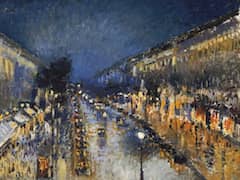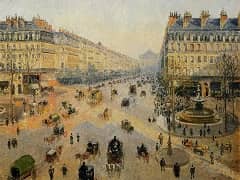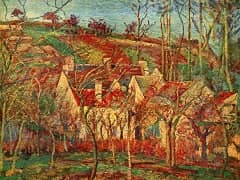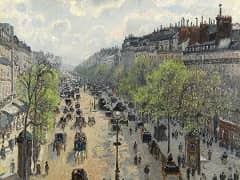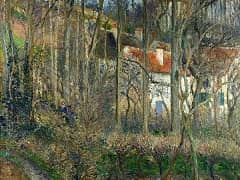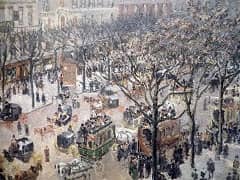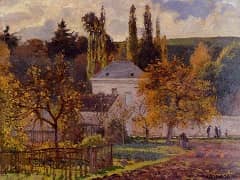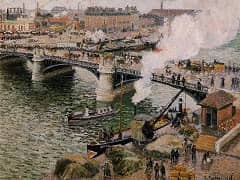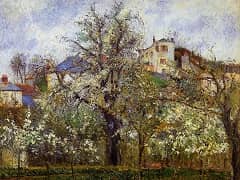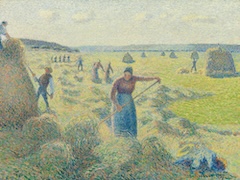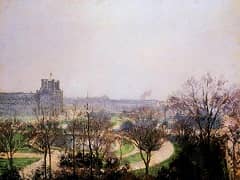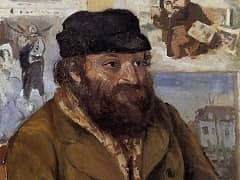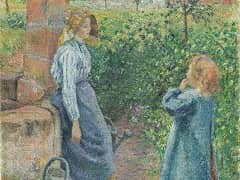The House of the Deaf Woman and the Belfry at Eragny, 1886 by Camille Pissarro
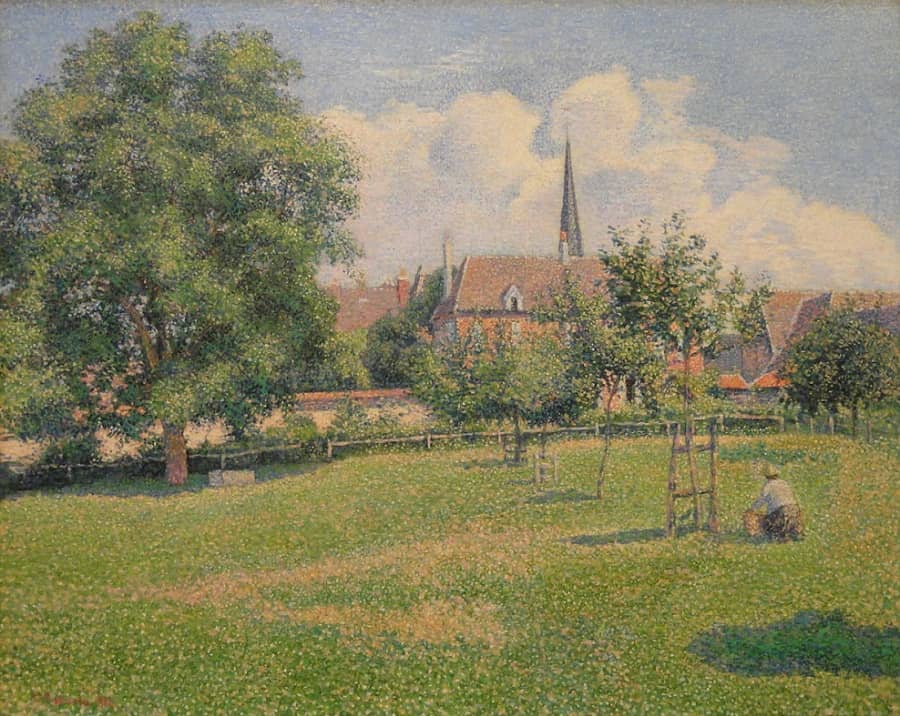
By 1885, Camille Pissarro was an experienced painter with a solid reputation as an Impressionist. That fall he met the Neo-Impressionist pioneer Georges Seurat, and, despite his dealer's protests and his colleagues'
disapproval, he eagerly adopted the young artist's revolutionary new methods. Pissarro considered Seurat's principles, derived from recent optical studies, to be logical extensions of the Impressionists' treatment of
light and color.
Pissarro painted this lush landscape during the summer of 1886, at the peak of his enthusiasm for Neo-Impressionism. Its brushwork, one of the artist's most consistently dotted efforts, demonstrates Seurat's method
for dividing contrasting warm and cool hues. He used small points of violet, blue, and deep green for the shadows and stippled dots of yellow, rose, and orange to indicate the dazzling effect of the morning sun. The
title refers to his neighbor's home and the spire of the church in Eragny, the tiny Normandy village where Pissarro lived with his large family.
The artist clearly considered this composition an important work, as he submitted it to high-profile exhibitions in 1887. By 1889, however, frustrated with the laborious method, he returned to a more spontaneous
approach. As a result, Pissarro's Neo-Impressionist paintings are rare, and the quality, size, and execution of this canvas make it a key work in the history of the movement.

